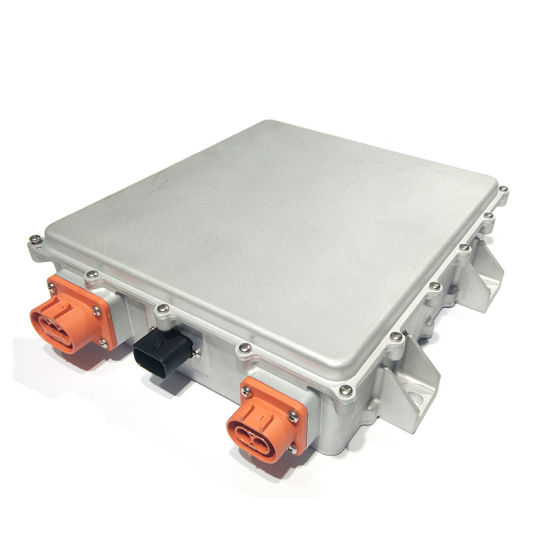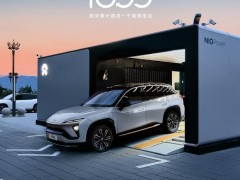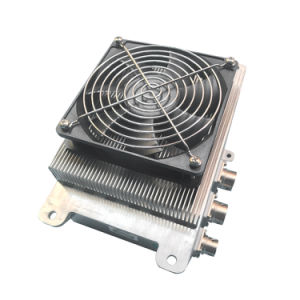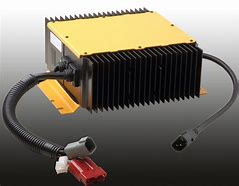Electric vehicles charger (EVs) present a chicken-and-egg problem: Drivers need to live where they can charge, but apartment buildings don't want to install charging systems until they know there's a need.

guess what? Have requests. It's now.
Why install EVC?
Sales of hybrid and electric vehicles will grow from 8.3% of North American auto sales in 2019 to more than 38% in 2025, as 1.5 million electric vehicles hit the road, JPMorgan forecasts. Wider range, including pickup trucks. Charging times are also shortening, making EVs more attractive.
Federal and state governments encourage EV sales in a number of ways - primarily EV, Low Emission Vehicles (LEV) and Zero Emission Vehicles (ZEV) (depending on location) free use of HOV/toll lanes and purchase rebates.
On the residential front, too, encouragement comes in many forms. Government and utility incentives help developers lower installed capital costs; New York State stands out in this regard. Several states already require charge points; California requires 3% or more of new parking spaces to be “ready” for EVC in new multifamily buildings. Some municipalities are asking for even more. Using EVC in 2% of parking spaces earns the building additional points for LEED certification.

Multifamily owners and managers benefit from the investment. "Electric vehicles have become a growing consumer trend, and it was important for LMC to find ways to meet this trend in our community," said Chris LMC, vice president of community technology services based in Charlotte, North Carolina. Acker said.
EV chargers also contribute to sustainable development goals. ChargePoint, an EVC provider that provides data on emissions offsets to its customers, has been used by Greenbelt, Maryland-based real estate firm Bozzuto for its sustainability initiatives. EVC also helps with compliance; as federal, state, and city regulations come in, early adopter leasing companies will have the infrastructure in place to meet them.
When is EVC installed?
Determining when to install EVC is easy: ideally, during construction. According to the RCLCO real estate consulting white paper, “Electric Vehicle Charging Strategies Implemented in U.S. Real Estate,” “owners who neglect to deploy EVC during construction will incur higher installation costs after development, if given the opportunity.”
“Upgrading electricity in an apartment building can be very expensive — easily over $100,000,” said Steve Atwater, president of Low Power EV Charging (LPEVC). He was referring to new transformers and pipes, drilling, trenching and more. But he guesses that as residents switch to electric vehicles over the next decade, most car owners will.
“Costs vary based on the number of EV chargers, whether the power supply needs to be upgraded, the distance of the EVC station from the power supply, etc.,” he added. "One L1 can cost $1,800 and multiple L2s can cost over $100,000. Each case is different."

pros and cons
EVC rebates and incentives center around Level 2 charging. "Level 1 is too slow; people want faster" is conventional wisdom. But if charging overnight in your own space, does speed matter?
“L2 increases the range per hour—good for residents. L1 is potentially more cost-effective and has a lower impact on the building’s energy system,” notes Cassandra McFadden, vice president of sustainability at Bozzuto. "It's a case-by-case assessment."
Instead of spreading the L2 chargers around the garage, engineers clustered them at one end or near the clubhouse or sports area—rarely at or near where residents lived or parked. “We found that the standard Level 2 EV charging stations around Napa were not particularly convenient for multifamily,” said Charles Shinnamon, co-owner of Quail Run Apartments in California.
Result: Residents receive an inopportune message asking them to unplug and move for the next person, who also has to get dressed and get out and drive into place. Residents have had to travel farther than usual. Complaints about this system will be referred to the Property Manager.
So when Quail Run's leaders chose EVC, they chose L1, which "minimizes the impact on Quail Run's energy needs and will allow many of our residents to charge their vehicles."

"Much" is very important. Installing L1s costs less, space for space, and LPEVC's Atwater says he can install 16 L1 stations for every three L2s. While L1 charges at a slower rate, when residents charge at night, they get more "mileage" than the average commuter needs in a day. Those who drive further will have to replug.
cover the cost
EVC may be an amenity that is part of common area maintenance. But most management companies use a web app to track residents' usage and may add a monthly service fee to the electricity bill. Connectivity also allows for price controls and limits on energy usage; residents can check the status of their charges and add cash to their accounts.
Pricing can be by time, session or kWh. McFadden said Bozzuto residents typically pay hourly directly through their ChargePoint or similar account.
No matter how it works, the trend will continue. “Beyond Tesla, we’re seeing an increase in the number of other EVs and demand for our charging stations,” says LMC’s Acker, who seems to be speaking for a lot of people.
A Partial EV Glossary
EVC – electrical vehicle
EVSE – EV service/supply equipment; what’s between the power source and the car.
ICE – internal combustion engines (gasoline vehicles).
LEV – low-emission vehicle.
Level 1 (L1) EV charging uses a standard 120-volt outlet and your car’s cord. It can add some five to 10 miles of range to a car per hour. Good for plug-in hybrid cars.
Level 2 (L2) charging uses a 240-volt outlet (like for a clothes dryer). Most add 20 to 25 miles of range per hour.
Level 3, DC charging, or fast charging—adds 180 to 250 miles in an hour. Chargers look like gas pumps.
Long dwell – overnight charging, when residents leave a car for 8-12 hours.
MPGe – miles per “gallon” of electricity. A way to compare.
OCPP – open charge point protocol, the shared “language” of open EV chargers and charging station management systems. The idea is to have any EV charger work with any charger management software.
ZEV – zero-emission vehicle.
Next:Common charging faults of electric vehicle chargers
Previous:Teach you how to charge with the charger!
Contact Person: Miss. Kiki
| WhatsApp : | +8617763224709 |
|---|---|
| Skype : | +8617763224709 |
| WeChat : | +8617763224709 |
| Email : | kiki@lifepo4-battery.com |